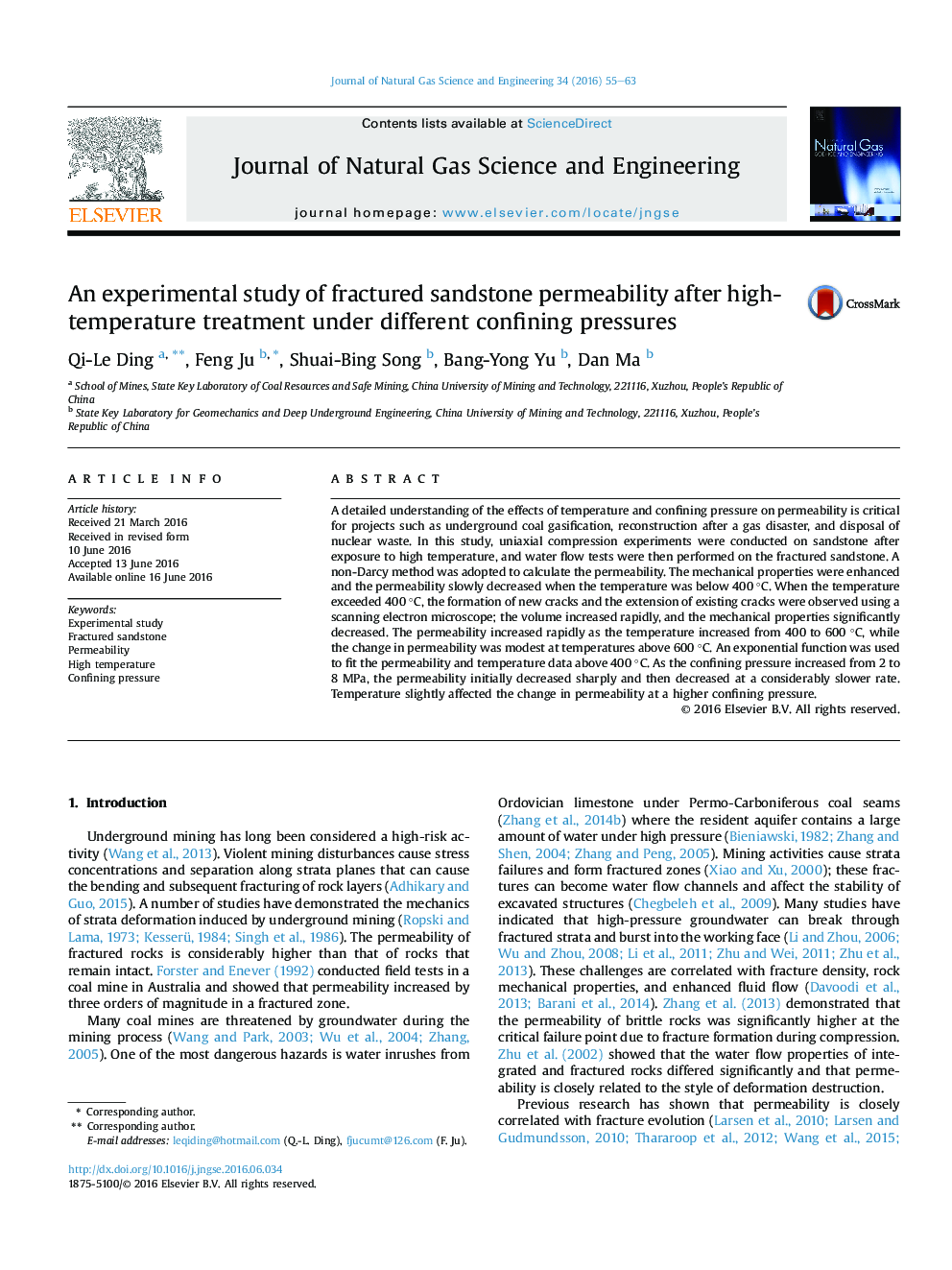| Article ID | Journal | Published Year | Pages | File Type |
|---|---|---|---|---|
| 8128559 | Journal of Natural Gas Science and Engineering | 2016 | 9 Pages |
Abstract
A detailed understanding of the effects of temperature and confining pressure on permeability is critical for projects such as underground coal gasification, reconstruction after a gas disaster, and disposal of nuclear waste. In this study, uniaxial compression experiments were conducted on sandstone after exposure to high temperature, and water flow tests were then performed on the fractured sandstone. A non-Darcy method was adopted to calculate the permeability. The mechanical properties were enhanced and the permeability slowly decreased when the temperature was below 400 °C. When the temperature exceeded 400 °C, the formation of new cracks and the extension of existing cracks were observed using a scanning electron microscope; the volume increased rapidly, and the mechanical properties significantly decreased. The permeability increased rapidly as the temperature increased from 400 to 600 °C, while the change in permeability was modest at temperatures above 600 °C. An exponential function was used to fit the permeability and temperature data above 400 °C. As the confining pressure increased from 2 to 8 MPa, the permeability initially decreased sharply and then decreased at a considerably slower rate. Temperature slightly affected the change in permeability at a higher confining pressure.
Related Topics
Physical Sciences and Engineering
Earth and Planetary Sciences
Earth and Planetary Sciences (General)
Authors
Qi-Le Ding, Feng Ju, Shuai-Bing Song, Bang-Yong Yu, Dan Ma,
